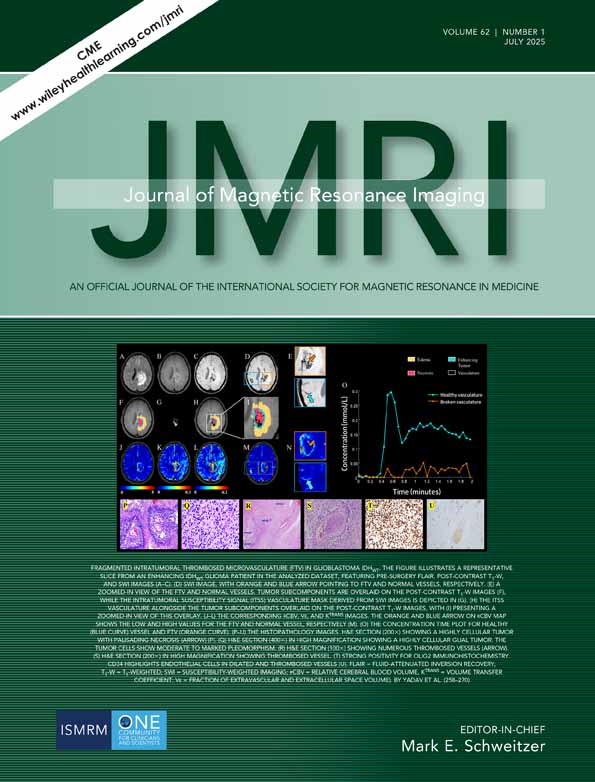The Potential of Model-Free Parameters Derived From IVIM in Evaluating Pathological Indicators and Long-Term Survival in NPC
Fan Yang and Haoran Wei contributed equally to this work.
Abstract
Background
IVIM is a useful quantitative tool for predicting prognosis, but it is labor-intensive. Simplified b-value settings and post-processing could be more practicable for clinical applications.
Purpose
To assess the value of model-free parameters (virtual MR elastography [vMRE] and signature-index [S-index]) derived from IVIM in evaluating pathological indicators and long-term survival in nasopharyngeal carcinoma (NPC), and to compare those with model-based parameters.
Study Type
Prospective.
Population
One hundred six patients (median: 49.5 years, 19.8% females).
Field Strength/Sequence
3-T, IVIM, T1- and T2-weighted imaging, contrast-enhanced T1-weighted imaging.
Assessment
The volumes of primary tumors were separately delineated. vMRE and S-index were calculated based on two b-values (200 and 1500 s/mm2), and correlations with pathological indicators (histology, epidermal growth factor receptor [EGFR] level) were analyzed. Six types of model-based parameters were constructed using all b-values. The value in predicting overall survival (OS) and progression-free survival (PFS) was calculated. The vMRE/S-index-Clinic model and tumor-node-metastasis (TNM) staging model were constructed.
Statistical Test
Spearman and intraclass correlation analysis (ICC), univariate and multivariate Cox analyses with seven clinical factors. Significance level: P-value < 0.05.
Results
The median follow-up duration was 63.0 (interquartile range: 55.9, 100.3) months. All parameters showed excellent agreement (all ICC ≥ 0.790). The vMRE/S-index was significantly correlated with EGFR level and histology. Moreover, the vMRE/S-index was an independent predictor of PFS (hazard ratio [HR]: 0.639 and 2.365, respectively) and OS (HR: 0.690 and 2.116, respectively). The performance of the vMRE/S-index (C-index: 0.585 ~ 0.631) was comparable to that of the model-based parameters (C-index: 0.551 ~ 0.630). The vMRE-Clinic model (C-index: 0.700 and 0.702 for PFS and OS, respectively) and the S-index-Clinic model (C-index: 0.703 and 0.709 for PFS and OS, respectively) demonstrated superior performance compared to TNM staging model.
Conclusion
Model-free parameters from IVIM can predict long-term survival in NPC.
Plain Language Summary
This study employed two simplified model-free parameters: the virtual MR Elastography (vMRE) to measure tissue stiffness and the signature index (S-index) to reveal the intricate tissues microstructures. These two parameters showed the comparable value in EGFR expression level and histology diagnosis as well as long-term survival prediction in nasopharyngeal carcinoma. Patients with high vMRE and low S-index value have favorable treatment outcome. Taking advantage of shorter MRI scan time and post-processing difficulty, the two model-free parameters showed good prospects in clinical application.
Evidence Level
2
Technical Efficacy
Stage 2




